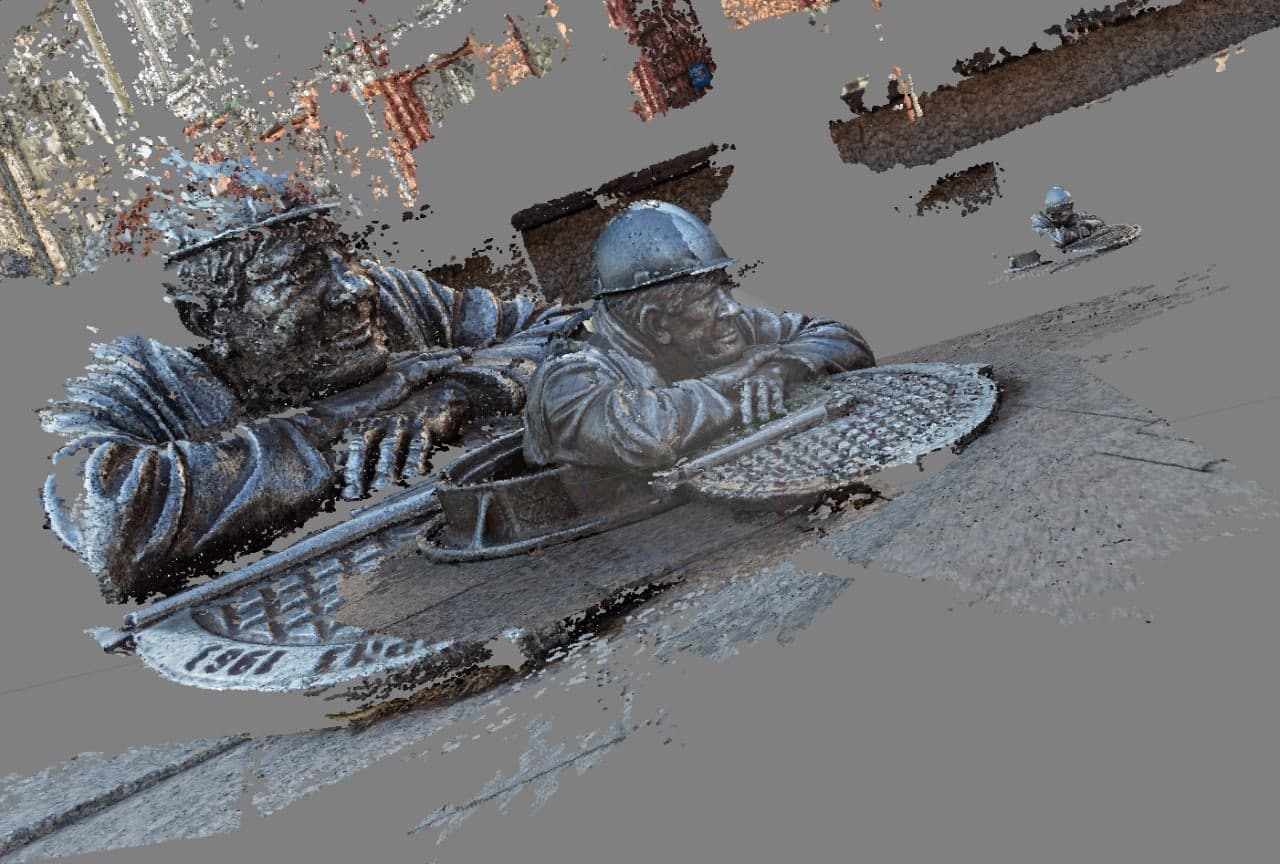
This is what happens if you stumble while shooting.
We in Tutu held a competition for the most unusual monument in Russia for almost six months. In our country, there is a monument to the keyboard in Yekaterinburg, a janitor always throwing his back towards you, a laboratory mouse that knits DNA in the opposite direction, and a two-meter mosquito, and anything else.
I wanted to ensure the same conditions in terms of the assessment of the monument for all to vote. Not such that they depend on the photographer, the weather in place, the time of day and the curvature of the arms, but really bring everything to a certain common denominator. In advertising, this issue is solved simply by rendering instead of a photo.
Well, I took and offered to shoot each monument and make a 3D model automatically based on the photos - something like a 3D scan of sneakers, just for the monument. At first glance, the task looked feasible if you have access to a large community of travelers from different cities. We have.
But then I still did not know that some monuments would have to be sculpted from plasticine at home, some were “torn off” from the support, and some are located in a closed territory of some kind of peaceful production between two cities in Siberia.
In general, I want to share with you STL models licensed for non-commercial use of 10 finalists of the competition. And tell you about the groped rake in photogrammetry, which allows you to do such operations in a very reasonable budget. The budget was 2500 rubles per model.
Shooting process
First, we went through the random monuments available not far from us in order to understand exactly how to write instructions to those people far from IT and photography who undertook to help us with the shooting of monuments.
The essence of the method is to take a camera, walk around the monument three times in a circle from the middle, lower and upper points, so that the monument is always completely in the frame, plus then complete the details like internal elements.
If the monument is tall - everything is from below, if it is below human height or there is a drone - you can circle it from above.
You can shoot with anything - from a GPS drone (expensive to rent and difficult to use) to a phone that everyone has. In practice, after a series of experiments, it turned out that it is best to shoot with a simple, but still a SLR camera with a common (best whale) lens. You can also use an expensive mirrorless camera, but where can you get it in Russia? Why a common lens and a DSLR are important - because a step further we need RAW files, which we will drive into Lightroom, where a correction profile for the lens will be superimposed on top to correct the geometry. If such a profile is not found or is somehow creatively rare, then we will lose in accuracy and the model may suddenly turn into a pumpkin.
Here's an example of turning into a pumpkin:

Do you recognize the "Date" monument, where a man with flowers flies towards love? No? But they should. True, here the girl fell from a stepladder during the shooting.
From this perspective, it is probably more understandable: The

final STL with it is rendered like this. The monument, by the way, took second place in the competition. The story with him is excellent: at first he flew through the door with pizza, then the pizza was replaced with a bouquet of roses, a bouquet of roses - with a bouquet of wildflowers and placed incorrectly, deepening by an extra half meter, after which the monument began to beat passers-by on the head with these daisies:
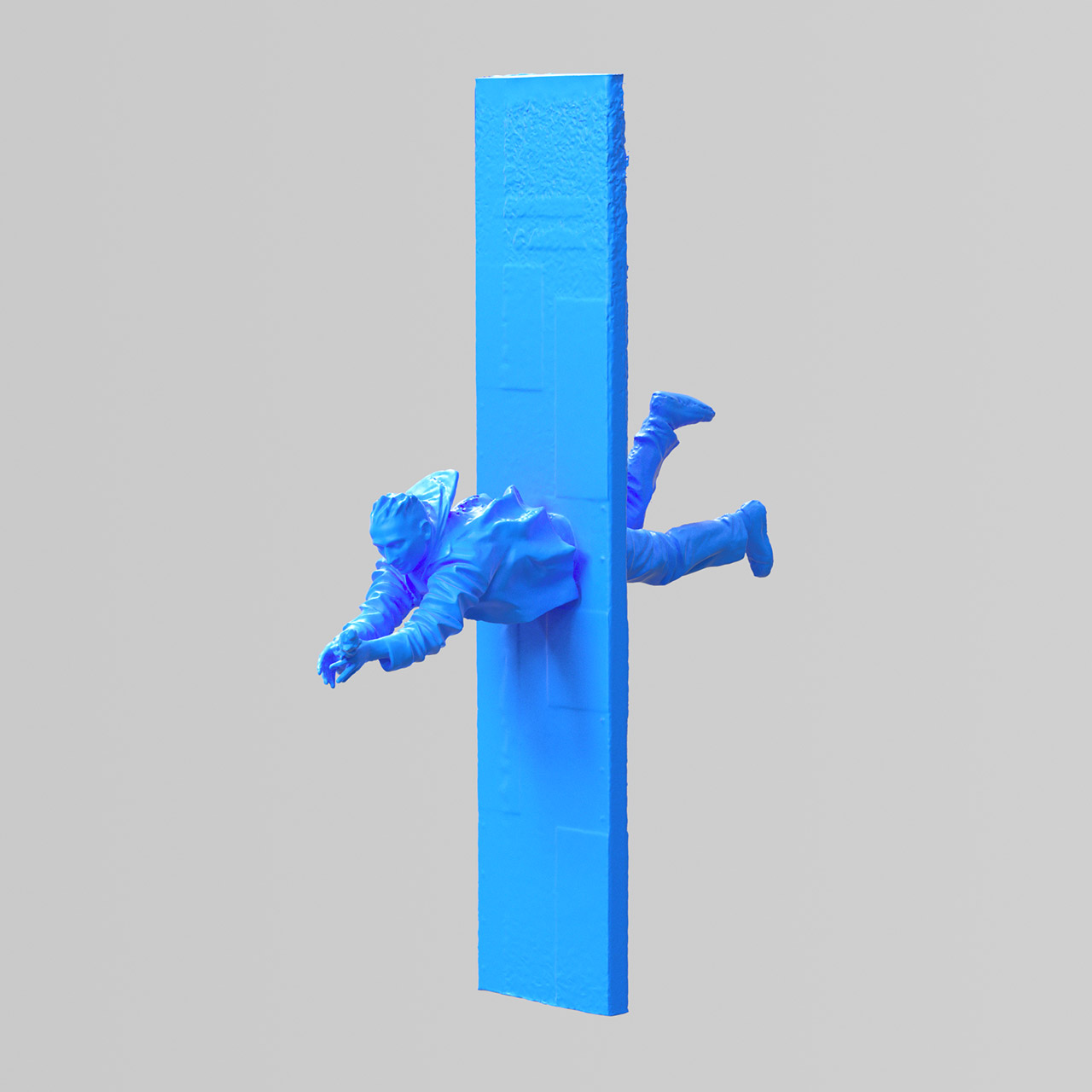
It will also be important for us to pull out details in the shadows, remove chromatic aberrations, add sharpness and discolor greens. Some of the monuments that were filmed near the end of the competition were already under Siberian snow. Snow was not solved in Lightroom, but painted over the texture in Substance Painter, but more on that later.
Shooting methodology
So, in order to assemble a monument, you need to make three circles on a typical object:
1. From the middle point.
2. From the bottom point.
3. From the top point.
There are also details inside the monuments, then you need to smoothly enter, taking pictures, and smoothly exit, taking pictures. In all cavities after the circles we smoothly exit and go in so that the shifts between frames are minimal, because this shaitan-software must calculate the shift vectors in each frame and understand how the photographer's coordinate has changed.
Real professionals use an RTK reference station, but we are community driven, remember?
We shoot at a wide angle. Best of all 18 mm or 24 mm at 1.6 crops. The aperture is closed to 7.1 or 9. There are problems with 50 mm fix lenses: for example, mostly small monuments were filmed with them, and at almost any f-number part of the monument fell out of sharpness, and the software was dull. If the monument is up to a meter high, you can shoot even at f / 9-11, but the edges of the model will deteriorate further.
This is how panda and bear gathered, friendship between Russia and China forever. Only the pedestal:
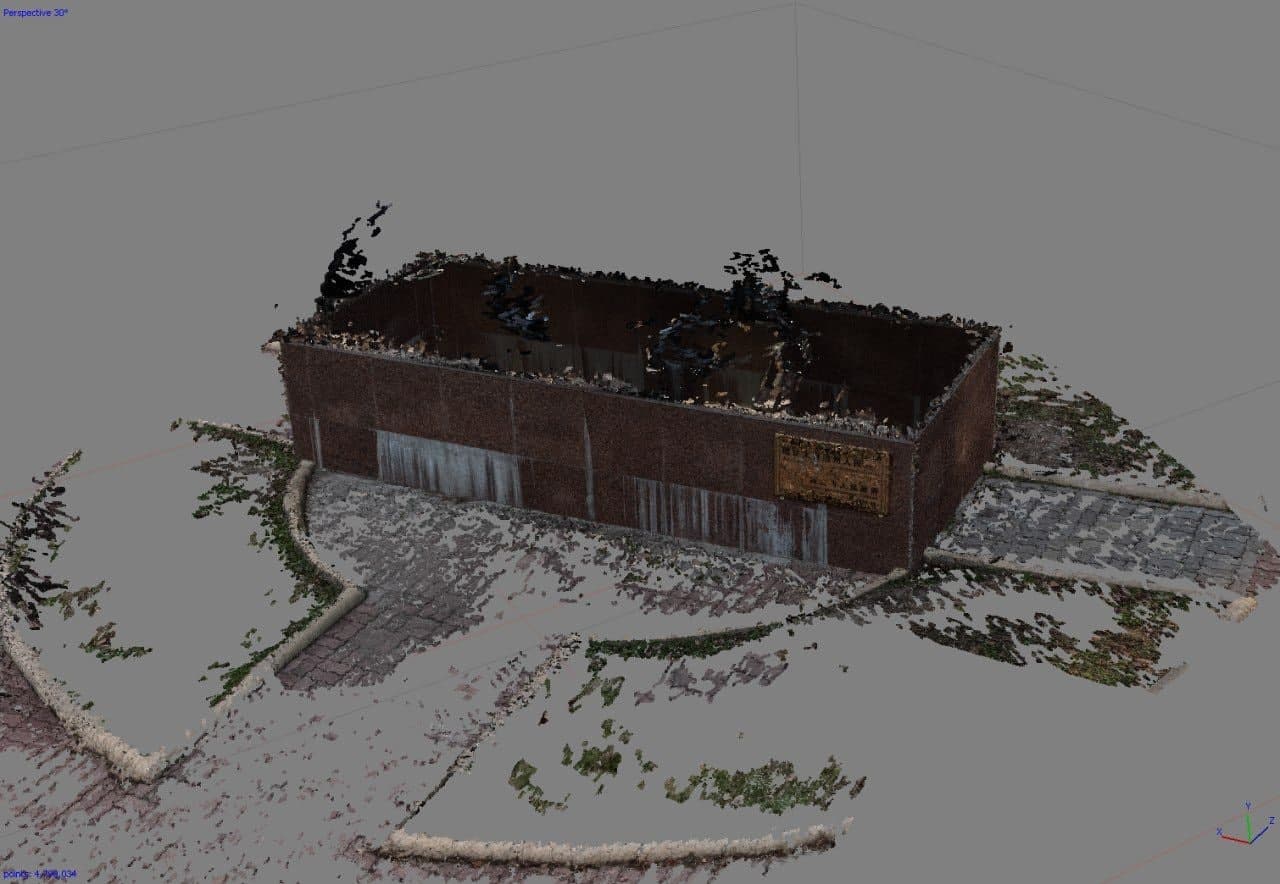
In the end, we ordered the modeling of these bears to a 3D sculptor, because it was not assembled after the second shoot. They look like this:
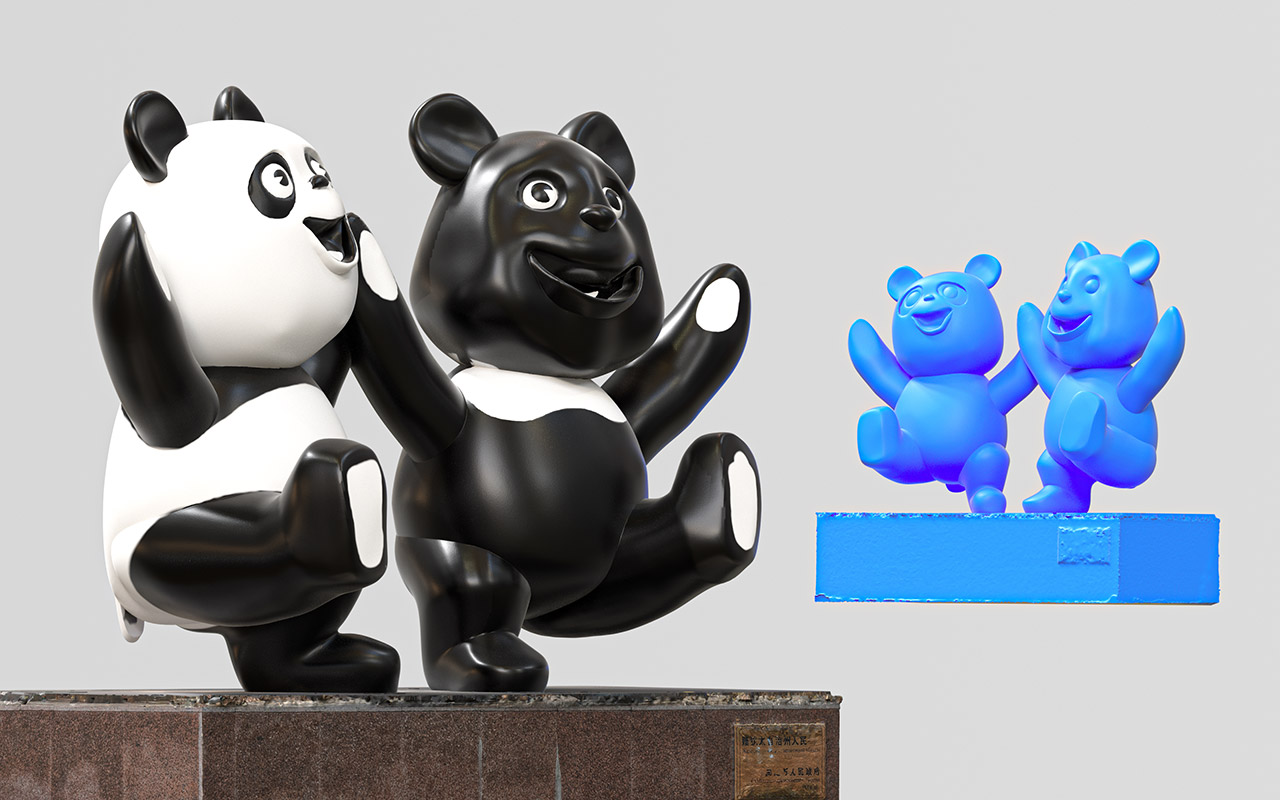
The monuments are made from different materials. Best of all is concrete (not for a monument, for shooting). Concrete is as reliable as Boris Razor. Concrete has a mass and almost no glare. But there are monuments made of metal and with shiny edges. Glare from the software point of view are holes in the model.
Therefore, we try to catch cloudy weather (this is when the sky is covered with a thin layer of clouds and is a huge diffuser for the sun, that is, light comes from everywhere, practically the best portrait light). At the same time, the weather should be stable, because the shooting takes some time and we don't really need to change the light and color. Overcast weather removes super glare. Places with silver will still bend inward on the models, and this will have to be adjusted by hand, but due to the weather, you can play a lot of quality on automatic assembly. Someone may ask: why didn't you use a matting spray? All for the same reason of crowdsourcing: we have ordinary people who can apply it incorrectly, plus then it must be cleaned off with a brush. And in this situation, the police may mistake the photographer for a vandal.
For those monuments that do not greatly exceed human height, a stepladder is needed for the third circle and shooting the top of the monument. At the end of the competition, we learned how to texture the missing tops, so that the camera rotates not only in the horizontal plane, and the guys have already filled their hand, and these additional actions did not require a strong increase in processing time.
An ideal spherical monument needs 18 frames in one circle. One ideal monument would be a globe. If he was human-sized. But due to its enormous size, I had to remove it from the copter.

The rest are more complicated. Here is a Yakut janitor from the Faceless (on the other hand, he is exactly the same), he needs about a hundred frames:
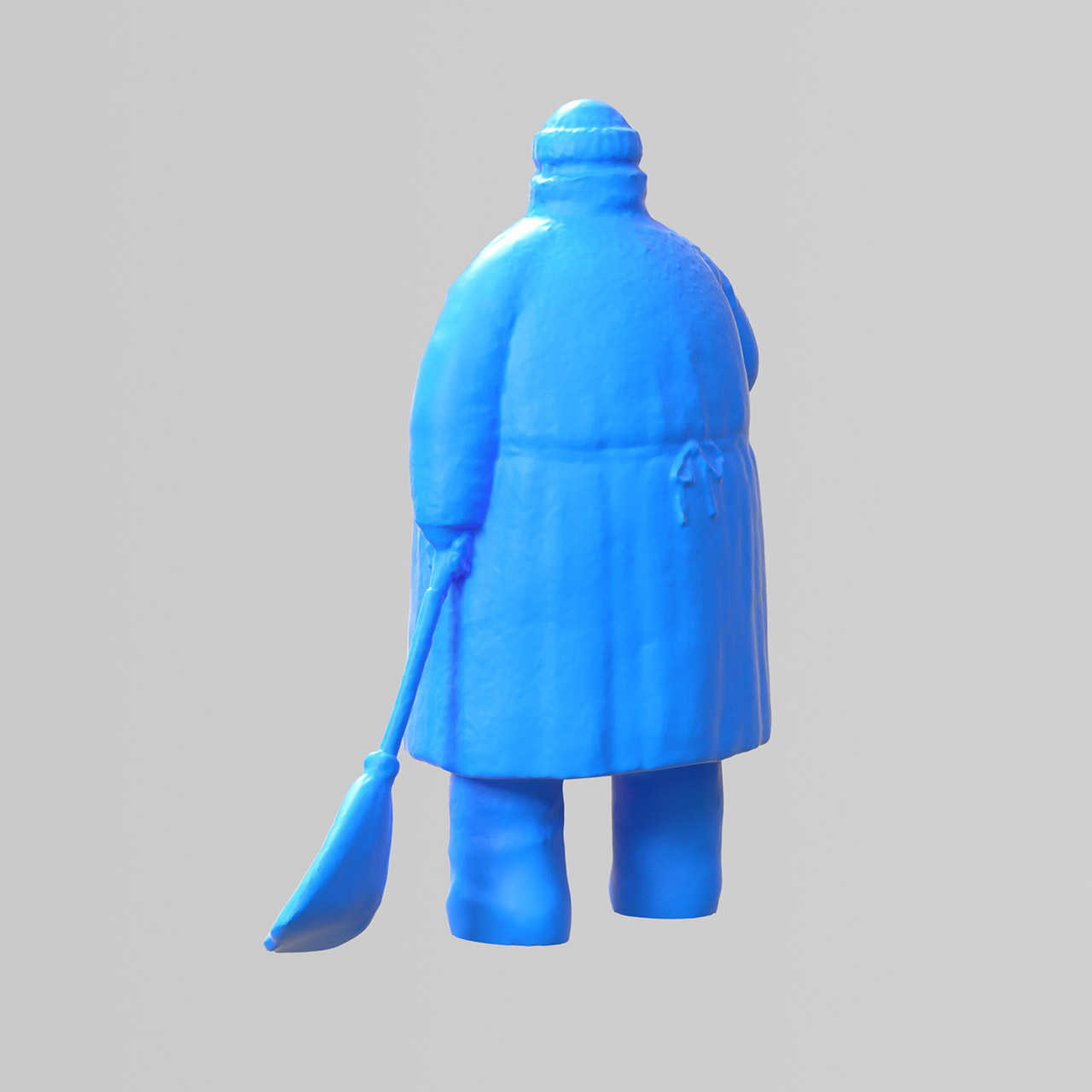
But the mosquito-oil pump from Noyabrsk, it already requires more personnel. He took third place in the competition. Now I once again look at the feet of the oil pump, and again I want to cry. Our models are imperfect, of course, but this one also glared strongly with all its parts:

And our record holder - Gorynych from Lipetsk, two passes of 700 frames, and still the crude model was like this:

Due to the number of photos, the sky with clouds was picked up, which was not static, so it turned out what happened:
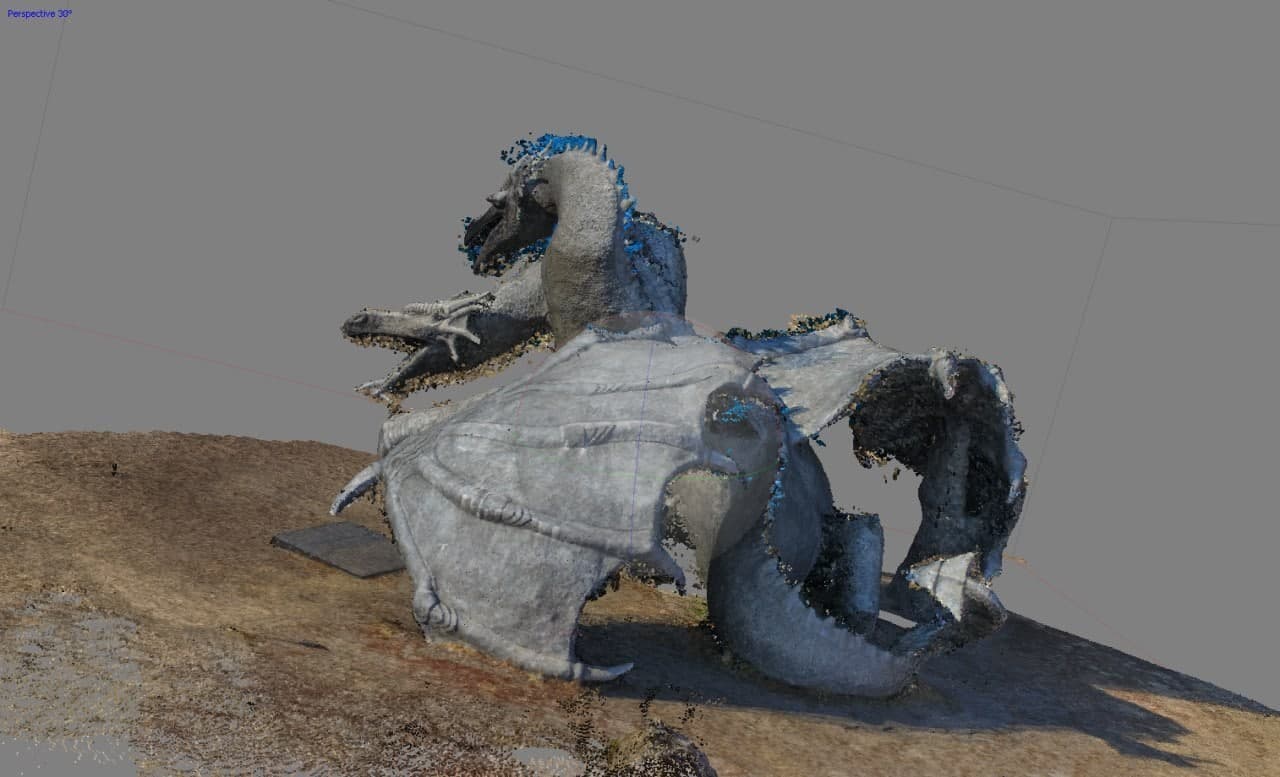
The final for comparison is:

Gorynych and similar monuments were collected for a long time. Dragon 3 days, first thrown, chased away, it turned out a lot of garbage. In the second run, they cleaned up, leaving a third of the total number of frames. In the third approach, masks were made for about 100 frames (that is, they were cut out in Photoshop, all day in 4 hands of this snake, as clean as possible), and after the masks on the third day we got a more or less clean assembly.
About Gorynych, we learned that an old toy was used as a reference for sculpting the dragon, but we could not get it, and the sculptor moved far enough from it. Let's just say that he used it to study the anatomy of this animal and its plastic.
And we also have a lot of monuments with a bunch of details. Literally, from a bunch of details:

Monument "Time". Magadan region, Magadan.
This one reached the final:
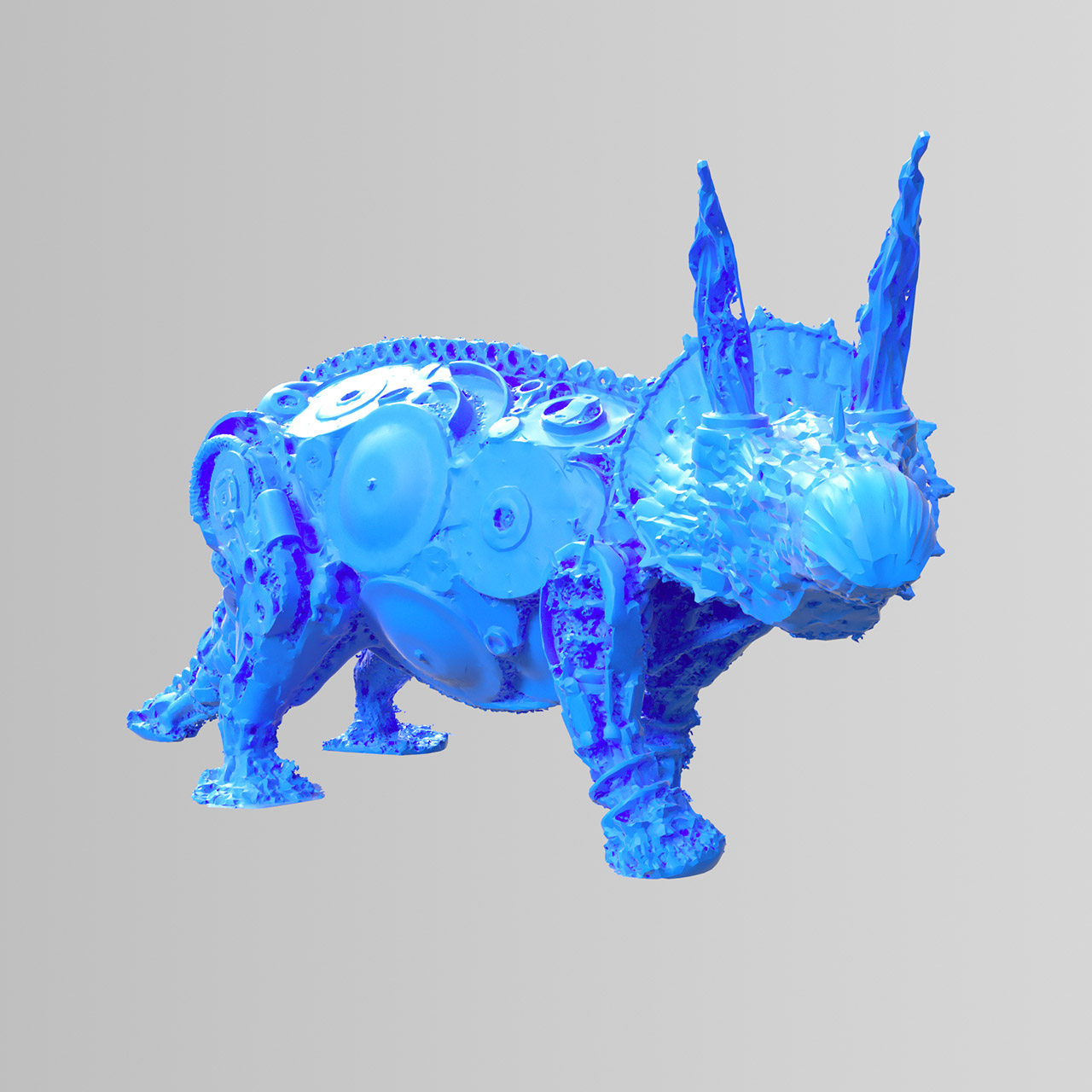
Sculpture "Dinosaur". Pskov region, Opochka.
At this point you can ask me: was it really impossible to ask the sculptors, customers or authors for the ideas of the model according to which they did it? I answer: surprisingly, no one had models. Moreover, as we spoke with the sculptors and owners of the monuments, they happily agreed to disclose the models for non-commercial use, because the digitization of the monument is a huge plus for them.
But there were a couple of exceptions. First, in Novosibirsk, on the territory of a research institute, there is a mouse that weaves DNA. About her, scientists said that they would do photogrammetry themselves and send it. And they did. And they sent the model.
Photogrammetry software
First tried the demo version of 3DZephirus. Advertising says that they are all just gods there, everything is going well with him and in general you need to buy faster. It's good that there is a demo. In general, you take any open source package (in our case, Meshroom) - and in our input photos everything is assembled hundreds of times better. Goodbye 3DZephirus, thanks for saving $ 3,000. In defense of this software, I will note that it really collects studio shooting with adjusted shifts to the millimeter better than others. But this is not our case.
Then I saw a friend of mine put together a sneaker for a commercial using
Agisoft Metashape. There is a good translation about this package in Habré, here it is... We found another software for 699 rubles per month RealityCapture (excellent software that collects in 2 clicks, in most of the assembly they used it in the end). And saw the free Meshroom. It is open source, in fact, it looks like an autodesk set for cleaning the model. And cleans perfectly. As a result, we collected the monument through Agisoft, Meshroom, RealityCapture (the simplest of all with an excellent result, we switched to it in the end) and cleaned it in Meshmixer (also free from Autodesk).
Then it turned out that enthusiasts who were eager to help us, sometimes no, no, but deviated from the methodology. We have written a very detailed document on how to prepare a camera, how to shoot, but it turns out that you need not only to say "how it should be in the ideal case", but also to describe typical mistakes. A typical mistake was to show us some details of the assembly software additionally or to save a circle, because everything is clear anyway.
Someone did not know that closing the aperture is an increase in the f-number, not a decrease. They began to indicate more specifically, because there is a confusion even between F and f.
For some, the shutter speed “less (shorter) 1/100” turned out to be 1/20, because 20 is less than 100. Or here's a call “I shot, but you have written here to shoot in RAW, I'm in JPG, nothing? He is also cool, but only a little in the darkness of the monument's hands, nothing, right? "
They brought up the idea that if you have already started a circle, then you have to go to the end, without being distracted by the cavity of the monument. Because of this, some objects were re-shot 3 times. Something like this happens when the path is violated (Monument "Plumber Stepanych." Omsk region, Omsk):
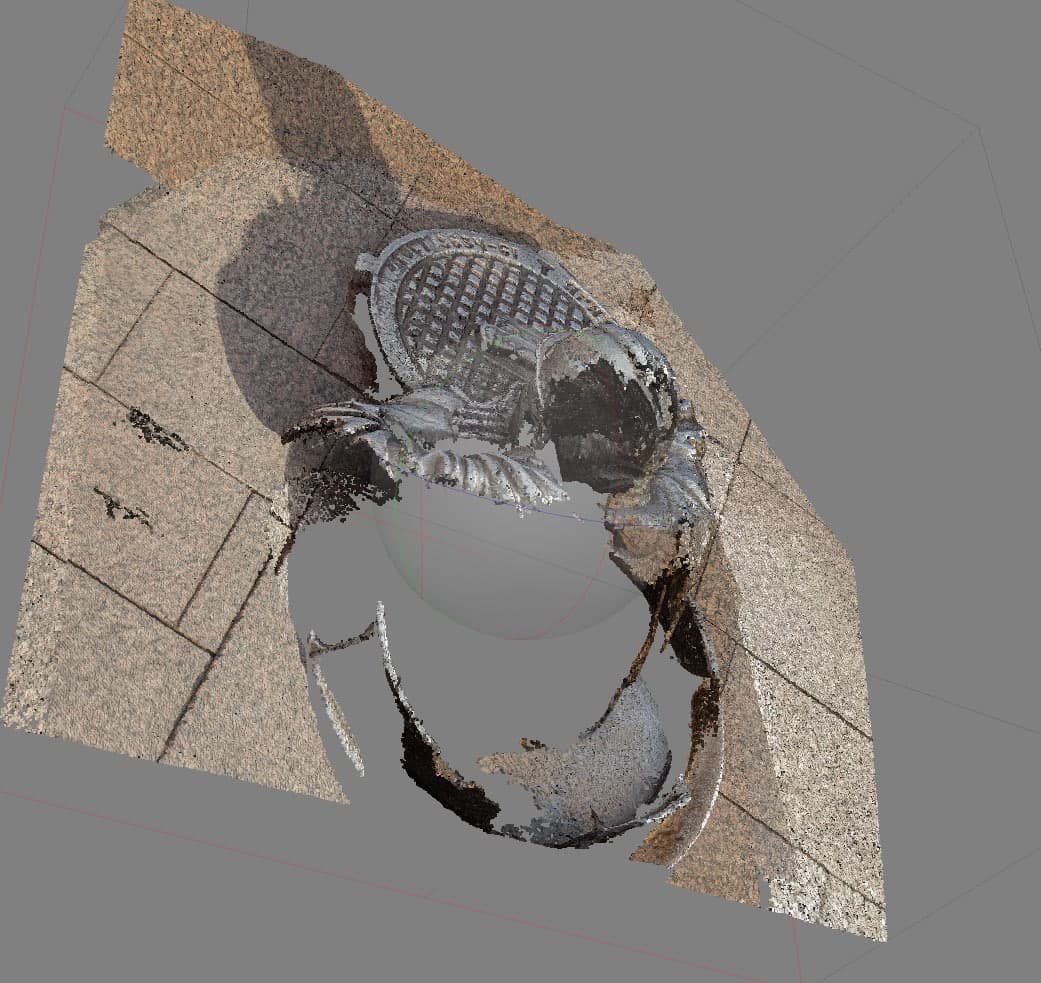
Collecting video is bad, because almost every software cuts it into frames and uses them as reference frames. There is software that can use each frame and even restore a picture of a higher resolution from two adjacent frames than the original two, but these are not at all our tasks and not our budgets.
Specific examples of monuments where something went wrong
Here the owner of the monument filmed himself, the map of the Russian Federation was not collected under his feet. The simplest solution is to constrain the axis of rotation of the camera. This monument can only be viewed in a circle, without flying up and down:
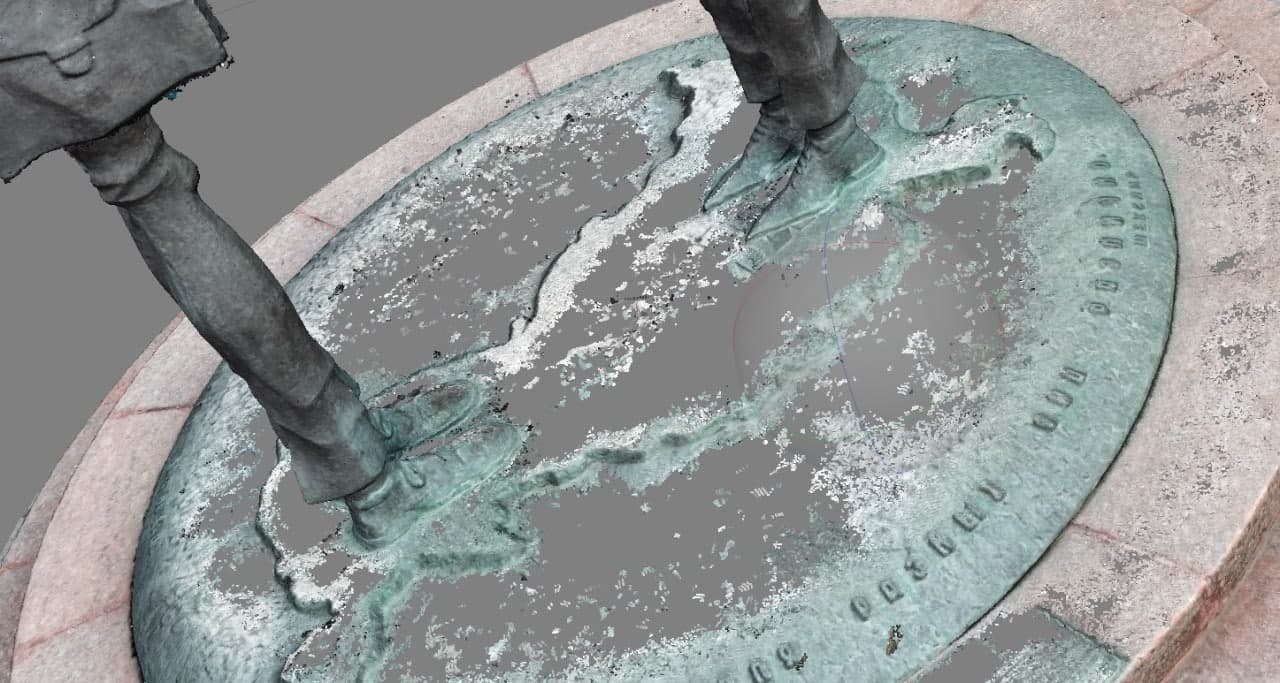
Here is the Tambov wolf. It was filmed at sunrise, there were a lot of highlights from behind, they reigned for a long time. The bottom line is that they filmed the back at sunrise against the sun and caught the hard glare of the "hares" in the lens, so it was not going well.

The Chocolate Fairy from Pokrov: filmed at dawn too. The monument is bronze, people tinder it. There are a lot of overexposures in those places where the bronze is rubbed:

Wish tree in Bryansk: the angel can only be removed from the copter, it had to be modeled manually from photographs.
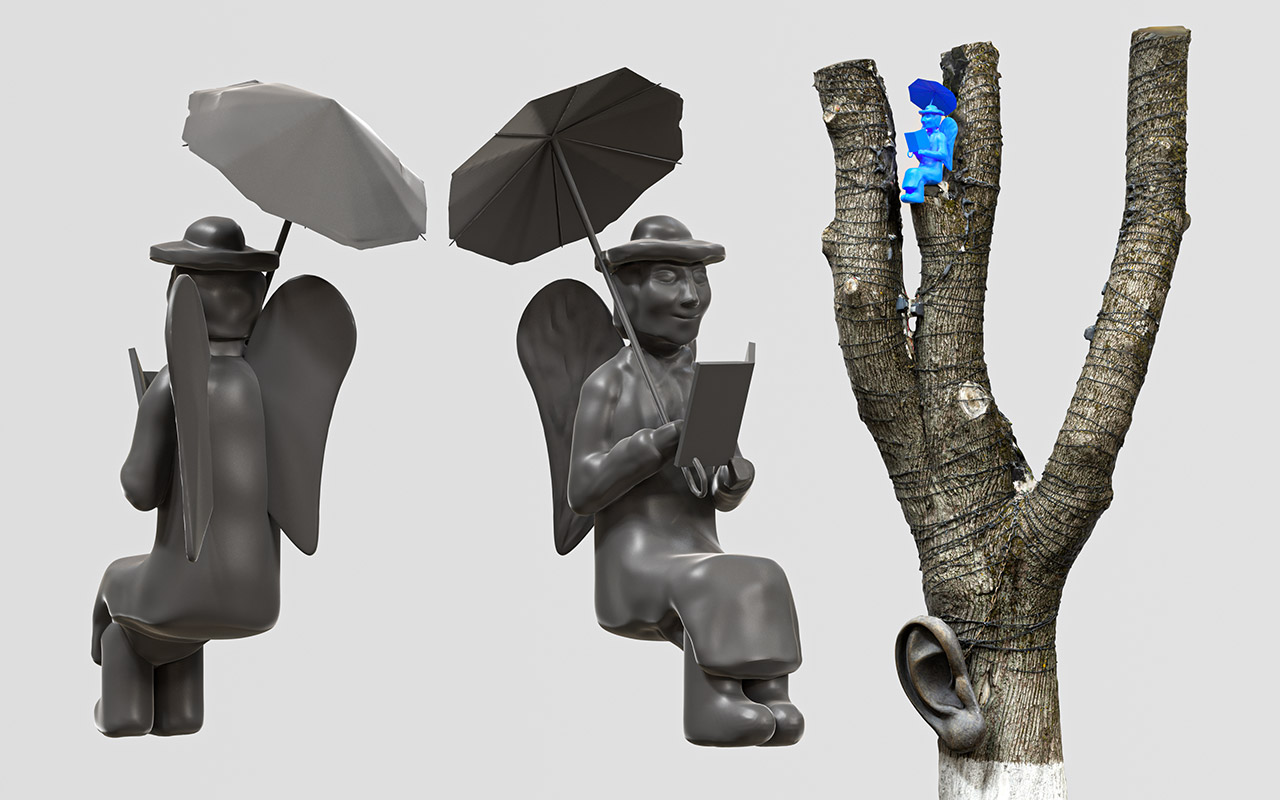
Initially, we tried to mold the same with our own hands from plasticine and scan it using photogrammetry in the studio. As a result, it turned out to be easier to model:

We bought two models: this is the monument "Chizhik" (very small, it was modeled from the photo in fact) and the head of Lenin in Buryatia. Because Lenin's head is very large and very spherical, a copter was needed there. Another 16 were modeled by us: for example, it is easier to draw a keyboard monument from scratch from a photo than to make photogrammetry. Here we were helped a lot by student interns who studied to be 3D designers.

There were problems when a particular monument was not going with a software error. He just takes it and doesn't intend to. From the same camera the other got together, but on ours it falls. We go to the Agisoft forum and ask. We are told: well, known story on Radeon, update the firewood. And we have them the newest, and in general nVidia. And to us: no, on it such a mistake, in principle, cannot be. Buy Radeon and upgrade your firewood.
Some monuments cannot be bypassed entirely if they are near a wall or cliff. Terminator from Glazov needs to be printed with a wall.

Dog Druzhok from Blagoveshchensk - it is stuck to the granite of the side next to the river. Behind him are ladders. To properly shoot - only a drone, in fact there is no normal circle:
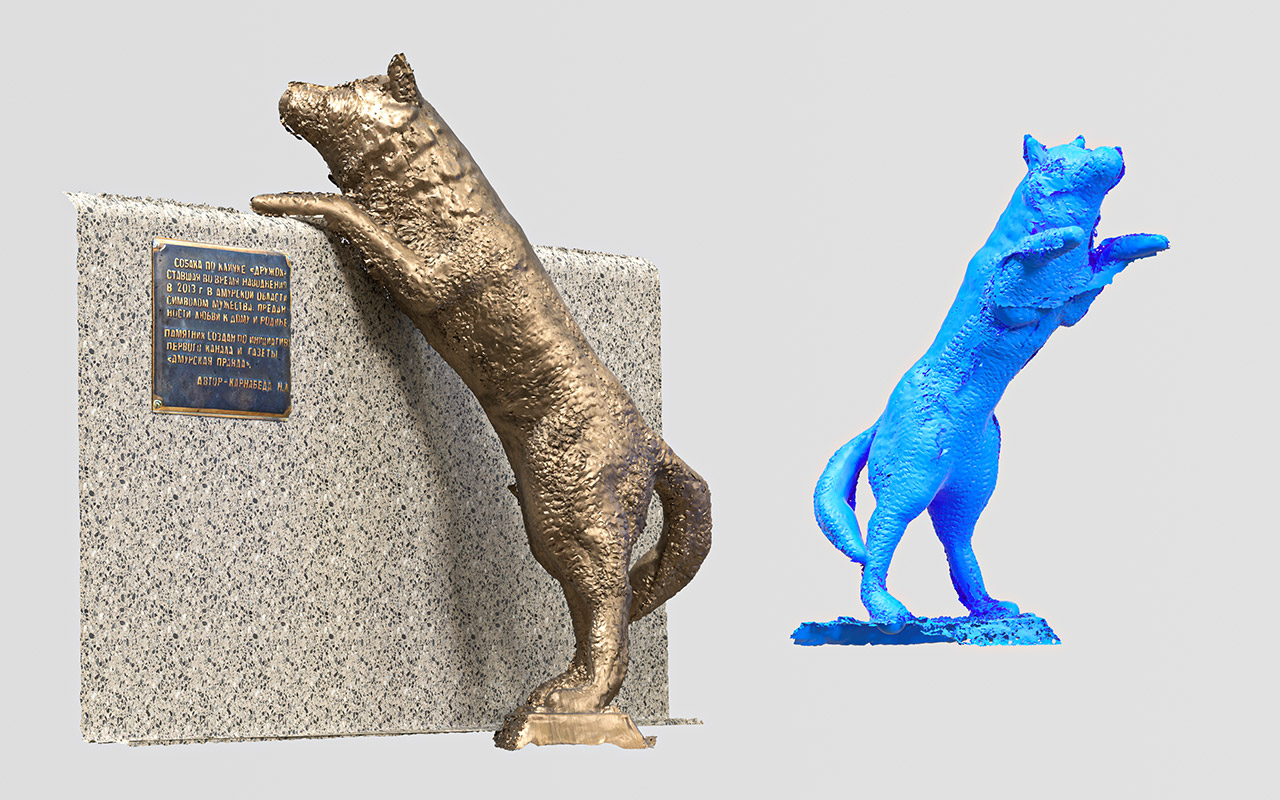
The jet train in Tver was partially modeled, since the individual components were already almost ready - they took the train, installed the engines:
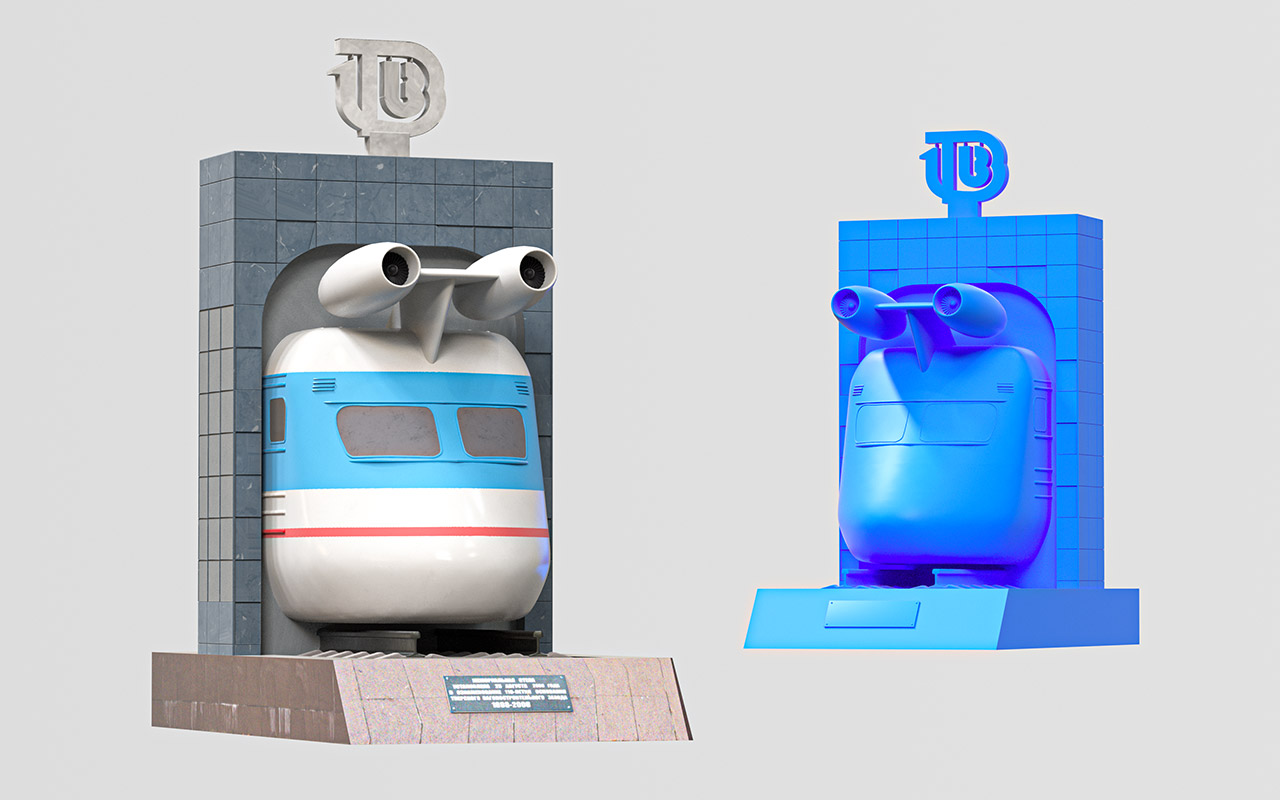
Finalist models
These monuments reached the final:
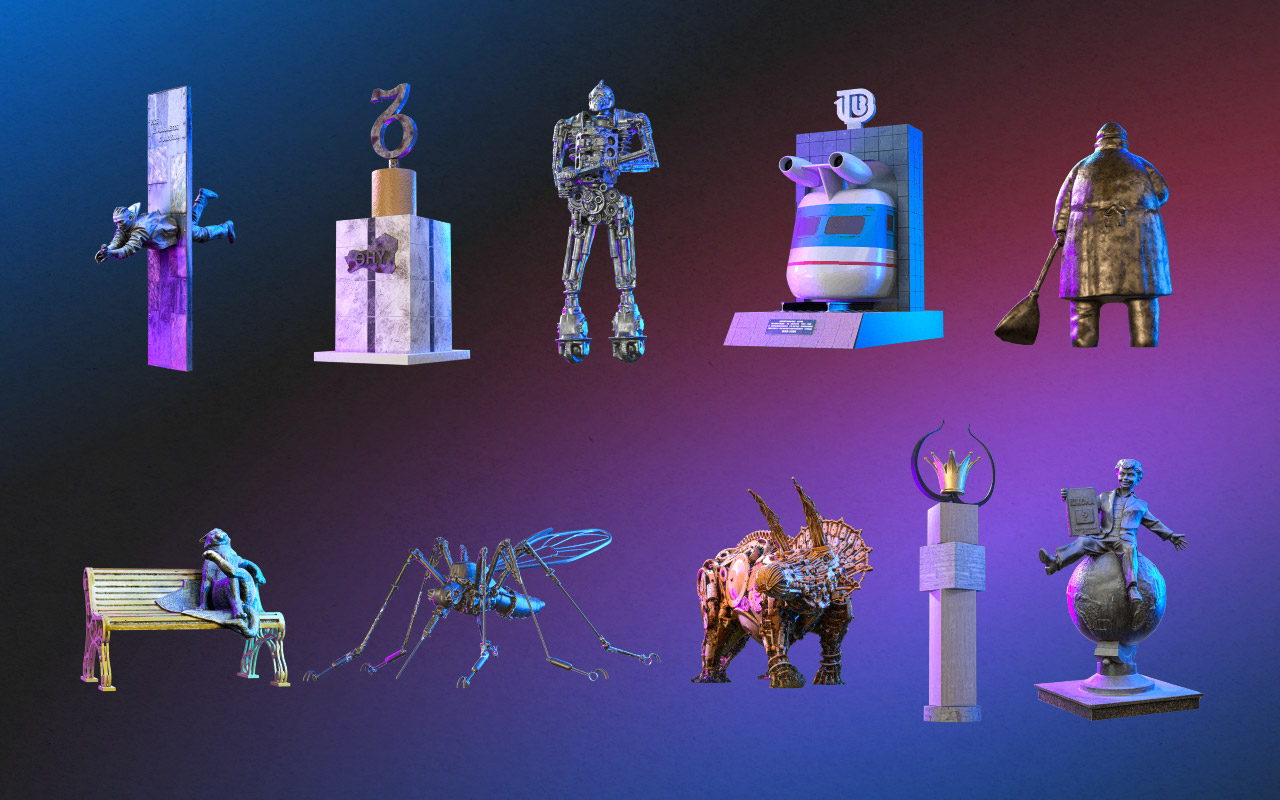
And the monument of Tuvan writing, which is located in the Beldir-Kezhii Museum-Reserve, won the competition:

Here are the files of the models for uploading (65 Mb). These are STL files licensed under CC BY-NC, meaning you can use the models for teaching, printing figurines for personal use, but you cannot benefit from their use or incorporate them into derivative works that will be used for profit.
You can view all 3D models of 100 monuments in players here .
And finally, I want to say once again a huge thank you to all those who helped collect data on monuments throughout the country. Thank you very much!